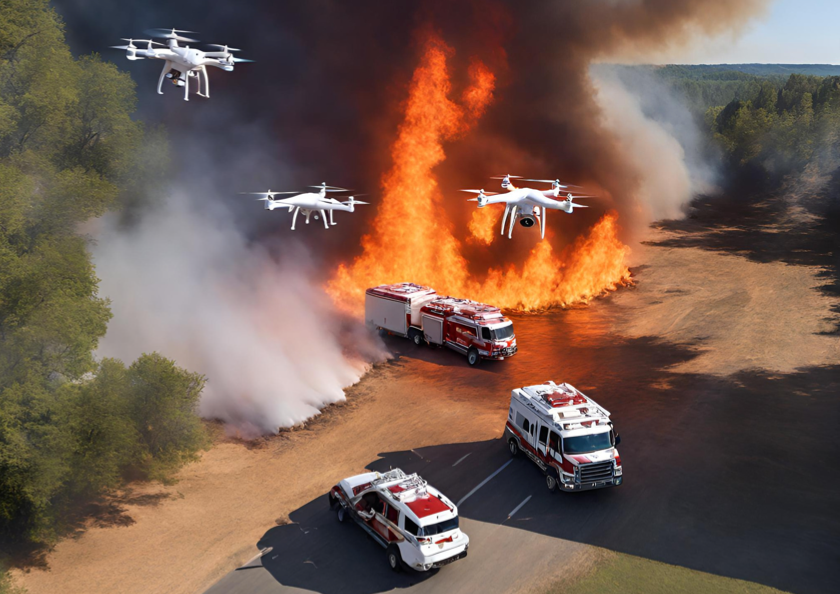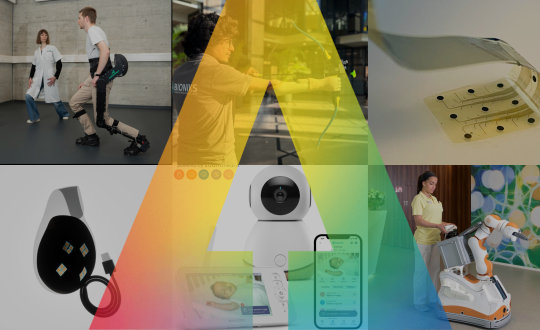Autonomous robots for disaster management

- 21 December 2023
By Elizaveta Agurbash
Equipped with artificial intelligence and advanced sensors, autonomous robots can navigate through complex and hazardous environments, gather data, and perform specific tasks with minimal human intervention. These robots are valuable assets in disaster response scenarios where human access may be limited or dangerous. By utilizing autonomous robots, responders can minimize risks to human lives and enhance the efficiency of disaster management operations. These robots can swiftly assess and collect data about the affected areas, identify survivors, locate potential hazards, and provide real-time information to aid decision-making.
At the AI for Good Global Summit 2023, the panel discussion on “Autonomous Robots for Disaster Management” emphasized the colossal impact of disasters, highlighting that in 2022 alone, there were over 400 disasters worldwide, resulting in a staggering loss of 31,000 lives and a daunting economic toll exceeding $220 billion in direct costs. This underscores the imperative need for advanced technological solutions in disaster response.
The transformative role of robots and drones in disaster response
The deployment of robots and drones for disaster management dates back to 2001, notably in Miami after a building collapse. Originally utilized for autonomy and navigation, these technologies have evolved beyond their initial purposes, finding application in various disaster rescue missions, showcasing their adaptability and effectiveness.
In the aftermath of Hurricane Katrina in the United States, drones emerged as a crucial resource. However, their adoption faces challenges due to a top-down, policy-driven approach, necessitating coordination among local agencies. Overcoming these barriers becomes imperative, reflecting the inherent people-centric nature of the problem is important, as was noted by Robin Murphy, Professor from Texas A&M University. Notably, the focus has expanded to encompass land use, flood prevention, and recovery. Insurance companies are increasingly engaging with this transformative business model, emphasizing the heightened vulnerability of specific populations and the exacerbated challenges in recovery efforts.
“Drones have been used after hurricane Katrina in the United States and are at heart resource because the adoption cycle is very top down – very policy driven and hard to get through”, shared Robin Murphy, Professor of Computer Science and Engineering at Texas A&M University.
Revolutionizing disaster mitigation by making technology more intuitive
In the realm of drone technology, Dario Floreano, Director of the Laboratory of Intelligent Systems at EPFL, is pioneering a fascinating approach. His focus lies in maneuvering drones through buildings and confined spaces, presenting disaster mitigation as a compelling application. The lab’s drones are not just for inspection; they’re designed to establish communication networks in areas where traditional infrastructure is lacking. The goal is to create a seamless and immersive experience, eliminating the need for extensive training. Imagine a swarm of drones controlled effortlessly by a single human through natural body motions, a groundbreaking advancement in disaster response. Switzerland, ahead in embracing innovation, prioritizes understanding technology’s potential before regulation, providing a glimpse into the future of intuitive disaster mitigation.
In the pursuit of disaster resilience, Floreano’s team envisions a future where technology developed for diverse purposes converges for the greater good. Their work goes beyond research, emphasizing the establishment of communication channels to inform and assist rescue teams. As they push the boundaries of drone capabilities, the next step is to make this technology more intuitive, enhancing its accessibility and effectiveness. This groundbreaking approach prompts us to consider how disaster mitigation forces can leverage versatile technologies originally intended for different applications.
“The aim is that the drones will not require training from a person flying it, making it a more immersive experience. Using swarm of drones that can be controlled by a single human using natural motion of the body, ” noted Dario Floreano, Director of the Laboratory of Intelligent Systems at EPFL.
Data integration and meaningful communication for disaster response
In a world drowning in data, effective communication plays a key role in disaster response. With the immense amount of data generated during emergencies, the lack of a robust communication infrastructure poses a significant challenge for countries. There is increasing importance of establishing systems that seamlessly connect data from various devices. This interconnected approach ensures that pertinent information reaches those who need it most, enabling a more efficient and responsive reaction to emergency situations.
Moreover, Dominick Romano Founder of Drainpipe.io highlights the necessity of nighttime emergency rescue training that involves uploading data into computers and simulating disaster scenarios. He underscores the crucial distinction between data and information, emphasizing that the latter only emerges when meaning is associated with the collected data. As complexities increase, Romano emphasizes the need for meaningful data management, stating that technology alone is insufficient—understanding the unfolding events requires attaching significance to the data, particularly in logistics and operational planning.
“Data is not information, until it is associated with meaning”, emphasized Dominick Romano, Founder of Drainpipe.io.
In reflecting on the current landscape of technology, Darrell Etherington, Managing Editor at TechCrunch, and the moderator of the session noted that while our technological capabilities have advanced considerably, there remains room for progress in the realm of disaster management. Etherington posed a question: What are the primary challenges in integration of robots or drones in disaster response? He emphasized the need in collaborative efforts, stressing that progress should unfold hand in hand with individuals and institutions. Awareness of the complexities associated with deploying autonomous systems in disaster scenarios is paramount. That there needs to be a call to action for the tech community to forge partnerships that extend beyond the confines of innovation and encompass a comprehensive understanding of the real-world challenges inherent in disaster response.
In the face of escalating challenges posed by disasters, the integration of autonomous robots and drones, coupled with advancements in data management and communication, emerges as a transformative force in disaster response. Autonomous robots equipped with AI and advanced sensors offer a vital solution for navigating hazardous environments, reducing human risk, and enhancing the efficiency of disaster management operations. The colossal impact of recent disasters underscores the urgency for innovative technological solutions, and the adoption of drones and robots proves instrumental in mitigating the loss of lives and economic devastation.
The emphasis on meaningful data management stresses the importance of not just collecting data but deriving valuable information, reinforcing the need for comprehensive systems that connect and interpret data for effective decision-making. In the convergence of technology, policy, and human-centric approaches, the collective efforts outlined in this discourse pave the way for a more resilient and responsive future in disaster management. From autonomous robots navigating dangerous terrains to drones communicating in confined spaces, and the integration of data for meaningful insights, where these advancements hold the key to revolutionizing disaster response on a global scale.
Watch our full video:

















